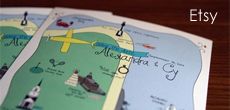 Planning ahead for the garden is both exciting and overwhelming. I spend hours reading seed catalogs and gardening books during the winter months. This leads to getting caught up in picking "the perfect" seed varieties and lost in tables of planting dates and row spacings. If you've ever felt a little panicked while trying to plan out your garden, take comfort in the fact that you are not alone. But it gets easier, friends. I'm not an expert but I learn new things about plants and gardening every day, and after keeping a garden for a few seasons, the planning part is so much easier. Here are a few tips I have for staying on track and not letting your fears of "messing something up" get in the way of actually getting your garden in the ground:
Planning ahead for the garden is both exciting and overwhelming. I spend hours reading seed catalogs and gardening books during the winter months. This leads to getting caught up in picking "the perfect" seed varieties and lost in tables of planting dates and row spacings. If you've ever felt a little panicked while trying to plan out your garden, take comfort in the fact that you are not alone. But it gets easier, friends. I'm not an expert but I learn new things about plants and gardening every day, and after keeping a garden for a few seasons, the planning part is so much easier. Here are a few tips I have for staying on track and not letting your fears of "messing something up" get in the way of actually getting your garden in the ground:
1. Start planning several months ahead, and make a schedule for everything you need to do. We built this year's raised beds two months before the frost-free date and filled them up with planting material one month before. If you start early, you can do things at your leisure when you have a warm Saturday here and there. You'll feel proud of yourself for not procrastinating.
2. Pay attention to the planting dates specifically for your zone for each crop you want to grow. You can plant many seed varieties outdoors a certain number of weeks before the frost-free date. I never manage to stay on top of this, so a few of my crops came in late this year. My plan is to be better prepared next spring!
3. Given that you could spend years pouring over the exciting reading that is today's seed catalogs, don't get too caught up on what to plant and what seed varieties to use. Take the most important aspects of each variety into consideration, and go from there. If you have limited space, plant your favorites! Don't waste space on things you don't love. Ask gardeners in your area what their best crops are and what varieties they plant. Realize, however, that the soil you plant in has a lot to do with the success of your plants as well, so if your neighbor has the most beautiful Brandywine tomatoes and yours are doing poorly, your soil might be missing a vital nutrient. Contact your local extension service about having a soil test done. You can also buy kits to test certain things, like pH, yourself.
 One aspect of planning ahead I am adding to my repertoire this summer is seed saving! There is something special about connecting your gardens to one another year after year, plus if done correctly, it can save you some money. Since this is my first year to save seeds, I'm not expecting miracles and I'm okay with the fact that I might end up having to purchase a type of seed that I attempted to save. But I'm all for the learning process and hope to have some success with these seeds next spring! I read the seed-saving section of my Rodale's organic gardening encyclopedia (a wonderful source of information) and got to work this weekend saving lettuce seeds, coriander, and peas.
One aspect of planning ahead I am adding to my repertoire this summer is seed saving! There is something special about connecting your gardens to one another year after year, plus if done correctly, it can save you some money. Since this is my first year to save seeds, I'm not expecting miracles and I'm okay with the fact that I might end up having to purchase a type of seed that I attempted to save. But I'm all for the learning process and hope to have some success with these seeds next spring! I read the seed-saving section of my Rodale's organic gardening encyclopedia (a wonderful source of information) and got to work this weekend saving lettuce seeds, coriander, and peas.
 Lettuce. When it gets too warm or lettuce has reached maturity, it will bolt, sending a long stalk up and eventually flowering. Lettuce flowers are self-pollinating, so after most of the flowers had opened, I cut off the stalk and kept it in a vase of water until the remained opened and they dried out, to prevent the dandelion-like flower remains from blowing away. When it had completely dried, I carefully picked off each white "fluff," which had about a dozen seeds attached to the end. At first I saved some of the white fluffy parts but eventually I was proficient enough to remove those and save just the seeds:
Lettuce. When it gets too warm or lettuce has reached maturity, it will bolt, sending a long stalk up and eventually flowering. Lettuce flowers are self-pollinating, so after most of the flowers had opened, I cut off the stalk and kept it in a vase of water until the remained opened and they dried out, to prevent the dandelion-like flower remains from blowing away. When it had completely dried, I carefully picked off each white "fluff," which had about a dozen seeds attached to the end. At first I saved some of the white fluffy parts but eventually I was proficient enough to remove those and save just the seeds:
 Next up, coriander, the seeds of the cilantro plant. Coriander is used as a spice, so you could save the seeds for that purpose or to plant. This is what the seeds look like on the plant before they dry out:
Next up, coriander, the seeds of the cilantro plant. Coriander is used as a spice, so you could save the seeds for that purpose or to plant. This is what the seeds look like on the plant before they dry out:
 Once they turn brown, they are easily removed from the plant:
Once they turn brown, they are easily removed from the plant:
 Finally, peas. When your pea crop is nearing the end, leave some pods on the vine to dry. When they are completely dried out (they will be brown and will not be holding any moisture), remove and shell the pods, to reveal wrinkly peas inside.
Finally, peas. When your pea crop is nearing the end, leave some pods on the vine to dry. When they are completely dried out (they will be brown and will not be holding any moisture), remove and shell the pods, to reveal wrinkly peas inside.
 My Rodale's reading suggested saving the seeds in envelopes and keeping them in the refrigerator, since they do best in low humidity. You can also store the envelopes in a cool, dry place as an alternative.
My Rodale's reading suggested saving the seeds in envelopes and keeping them in the refrigerator, since they do best in low humidity. You can also store the envelopes in a cool, dry place as an alternative.
One last thing: if your seeds are hybrid (that's different than genetically modified, just for the record--I've heard the terms confused often), you can save them, but they will not produce plants like the parent. Hybrid seeds are the combination of two specific parent plants. For example, to simplify the idea, a red flower and a white flower cross-bred to make a pink flower. If you replant the pink flower's seeds, you won't get another pink flower. I'm keeping this in mind as I re-research each tomato variety I have currently and figure out which ones to save!








2 comments:
Wow, this is so interesting!! I don't have a garden yet but I really want one. As soon as I do I'm coming to you for tips! ;)
Good luck with your plants and great job!
Thank you! You should totally start a garden. It's so fun and rewarding! I recommend the Tend blog for more inspiration and tips: http://tendcollective.blogspot.com
Post a Comment